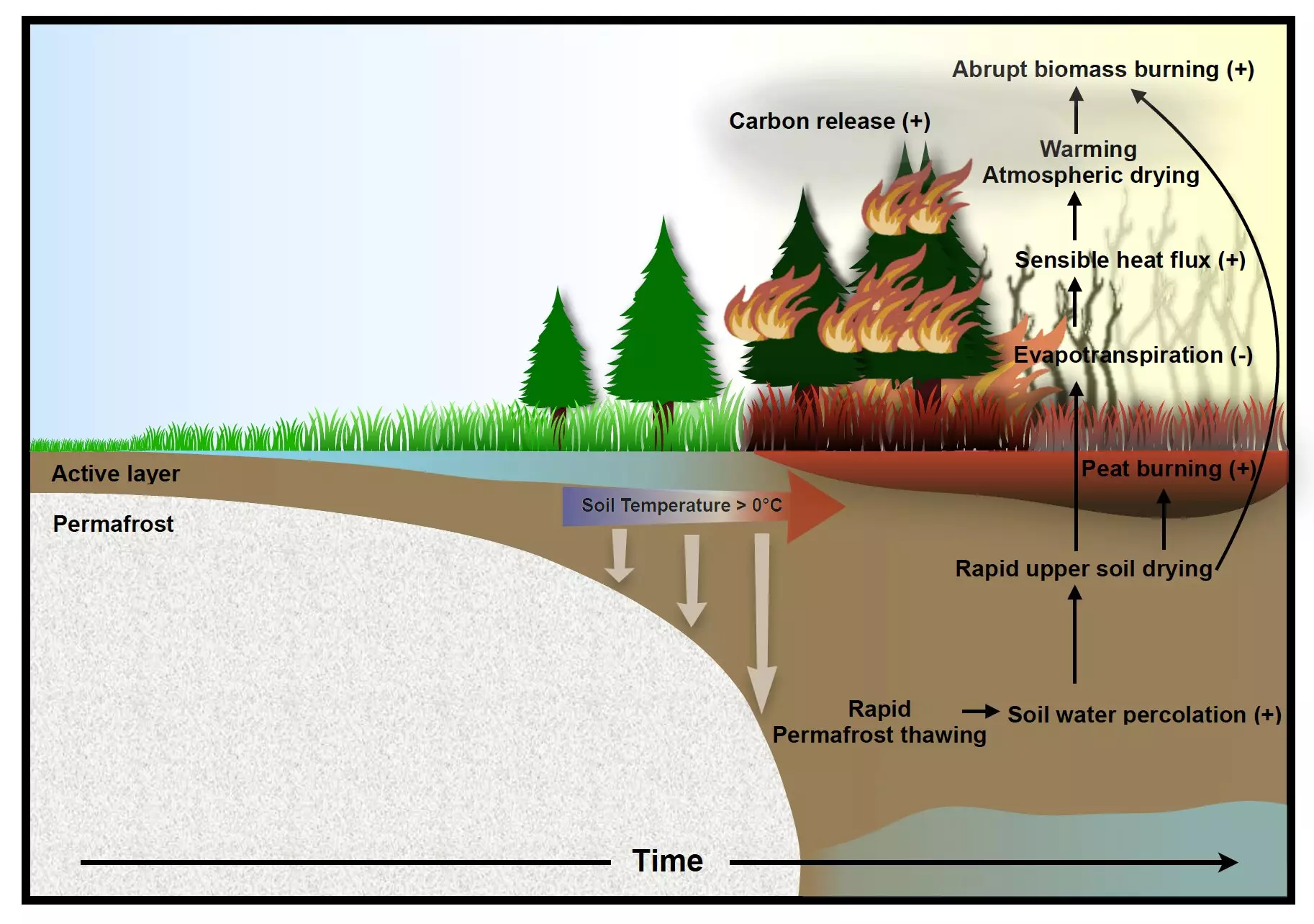The Arctic and Subarctic regions are witnessing unprecedented changes due to climate change, particularly in the form of permafrost thawing. A comprehensive study featured in the journal Nature Communications has provided significant insights into this pressing issue by utilizing advanced climate models. The research underscores a worrisome trend— as global temperatures rise, permafrost thaw will accelerate, potentially leading to severe increases in wildfire incidents across northern territories, including Canada and Siberia.
Permafrost, defined as any ground that remains completely frozen for at least two consecutive years, is primarily composed of soil, rock, and various organic materials. When permafrost thaws, it releases stored carbon, contributing back to greenhouse gas levels in the atmosphere. As warmer and drier climatic conditions have already been observed, this process is gaining traction as a critical concern for climate scientists who aim to forecast its implications for global ecosystems and human society.
To shed light on the future path of wildfire occurrences linked to permafrost thawing, researchers have employed sophisticated climate modeling techniques. Previous models have inadequately addressed the interplay between climate warming, permafrost degradation, and soil moisture levels—essential factors that influence wildfire behavior. For the first time, the study in question utilized the Community Earth System Model to create a comprehensive simulation that interlinks these elements.
The utilization of an ensemble approach, where scientists analyzed 50 simulations spanning from 1850 to 2100, allowed for a more nuanced understanding of anthropogenic impacts versus natural climate variability. This innovative methodology was executed on the IBS supercomputer Aleph, emphasizing the study’s commitment to harnessing advanced technology for climate research.
The findings are alarming; researchers project that by the mid to late 21st century, significant permafrost thawing will occur. The acceleration of this process raises concerns about local ecosystems, specifically how changes in soil moisture will trigger abrupt shifts toward intense wildfire proliferation.
Soil moisture is intimately connected with wildfires. The study indicates that substantial thawing may permit excess soil water to drain swiftly, resulting in a dramatic decrease in soil moisture levels. This paradoxically creates conditions ripe for wildfires, as drier surfaces are more susceptible to ignitions. The dramatic conclusion drawn by Dr. In-Won Kim, a key researcher in the project, illustrates that within a short span—just a few years—regions that previously experienced minimal wildfires could find themselves grappling with frequent and severe fire events.
Moreover, the research identifies a CO2 fertilization effect that is likely to enhance vegetation biomass in these high-latitude areas. Increased plant growth can lead to an abundance of fuel for wildfires, thus exacerbating the situation. The feedback loop between vegetation growth and drought conditions illustrates the complexity of ecological interactions that climate models must capture.
Future Directions and Implications for Climate Policy
As the study highlights the critical need for improved modeling of hydrological processes, it is evident that comprehensive observational datasets must be further integrated into climate models. Enhanced understanding of how climate change influences permafrost landscapes is paramount for predicting future scenarios.
The implications of increased wildfire activity are multifaceted—wildfires not only release carbon dioxide and organic carbon into the atmosphere but also have the potential to create a vicious cycle of climate deterioration. The interconnectedness of environmental changes suggests that policymakers need to take a holistic approach in addressing climate complexities.
As Prof. Axel Timmermann articulates, there is still a crucial gap in our understanding of the interactions between fire emissions and atmospheric changes. This knowledge is essential for crafting effective climate policies aimed at mitigating the effects of permafrost thawing and subsequent wildfires.
The emerging evidence from permafrost research underscores a nexus of interconnected phenomena set to escalate in intensity and frequency due to anthropogenic climate change. Addressing these challenges requires a concerted global effort to enhance climate models, understand feedback mechanisms, and implement proactive strategies to reduce greenhouse gas emissions. The stakes are high, and the time for action is now.


Leave a Reply